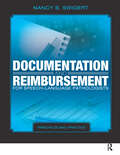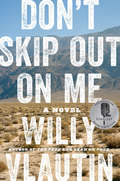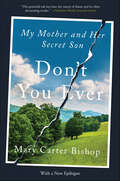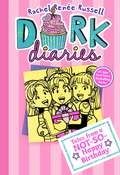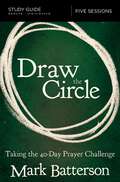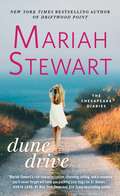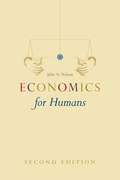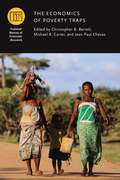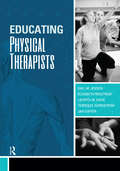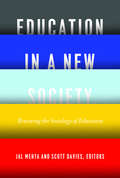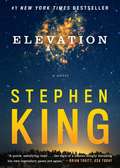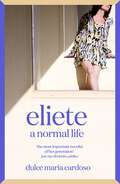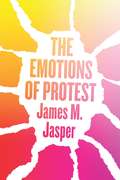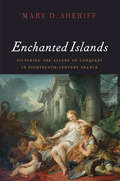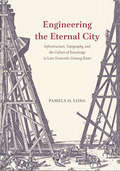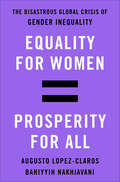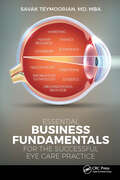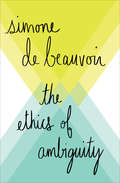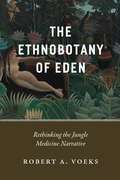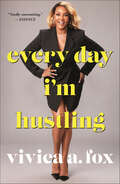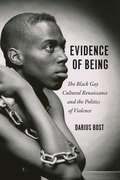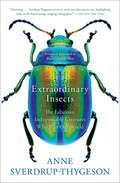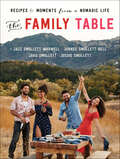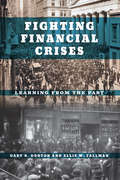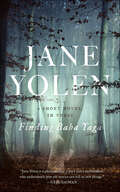- Table View
- List View
Documentation and Reimbursement for Speech-Language Pathologists: Principles and Practice
by Nancy SwigertAlthough it is the least noticed by patients, effective documentation is one of the most critical skills that speech-language pathologists must learn. With that in mind, Documentation and Reimbursement for Speech-Language Pathologists: Principles and Practiceprovides a comprehensive guide to documentation, coding, and reimbursement across all work settings.The text begins with section 1 covering the importance of documentation and the basic rules, both ethical and legal, followed by an exploration of the various documentation forms and formats. Also included are tips on how to use electronic health records, as well as different coding systems for diagnosis and for procedures, with an emphasis on the link between coding, reimbursement, and the documentation to support reimbursement.Section 2 explains the importance of focusing on function in patient-centered care with the ICF as the conceptual model, then goes on to cover each of the types of services speech-language pathologists provide: evaluation, treatment planning, therapy, and discharge planning. Multiple examples of forms and formats are given for each.In section 3, Nancy Swigert and her expert team of contributors dedicate each chapter to a work setting in which speech-language pathologists might work, whether adult or pediatric, because each setting has its own set of documentation and reimbursement challenges. And since client documentation is not the only kind of writing done by speech-language pathologists, a separate chapter on “other professional writing” includes information on how to write correspondence, avoid common mistakes, and even prepare effective PowerPoint presentations.Each chapter in Documentation and Reimbursement for Speech-Language Pathologists contains activities to apply information learned in that chapter as well as review questions for students to test their knowledge. Customizable samples of many types of forms and reports are also available.Included with the text are online supplemental materials for faculty use in the classroom.Documentation and Reimbursement for Speech-Language Pathologists: Principles and Practice is the perfect text for speech-language pathology students to learn these vital skills, but it will also provide clinical supervisors, new clinicians, and speech-language pathologists starting a private practice or managing a department with essential information about documentation, coding, and reimbursement.
Don't Skip Out on Me: A Novel
by Willy VlautinA FINALIST FOR THE PEN/FAULKNER AWARD From award-winning author Willy Vlautin, comes this moving novel about a young ranch hand who goes on a quest to become a champion boxer to prove his worth.Horace Hopper is a half-Paiute, half-Irish ranch hand who wants to be somebody. He’s spent most of his life on the ranch of his kindly guardians, Mr. and Mrs. Reese, herding sheep alone in the mountains. But while the Reeses treat him like a son, Horace can’t shake the shame he feels from being abandoned by his parents. He decides to leave the only loving home he’s known to prove his worth by training to become a boxer. Mr. Reese is holding on to a way of life that is no longer sustainable. He’s a seventy-two-year-old rancher with a bad back. He’s not sure how he’ll keep things going without Horace but he knows the boy must find his own way. Coming down from the mountains of Nevada to the unforgiving desert heat of Tucson, Horace finds a trainer and begins to get fights. His journey to become a champion brings him to boxing rings of Mexico and finally, to the seedy streets of Las Vegas, where Horace learns he can’t change who he is or outrun his destiny. Willy Vlautin writes from America’s soul, chronicling the lives of those who are downtrodden and forgotten with profound tenderness. Don’t Skip Out on Me is a beautiful, wrenching story about one man’s search for identity and belonging that will make you consider those around you differently.
Don't You Ever: My Mother and Her Secret Son
by Mary Carter Bishop“In this profound memoir, Mary Carter Bishop takes an openhearted and unflinching look at a family history that is equal parts love story and requiem for a brother she barely knew. Bishop turns her formidable investigative journalism skills inward to unearth long-simmering class and culture divides in bucolic rural Virginia."--Beth Macy From a prizewinning journalist, Mary Carter Bishop, a moving and beautifully rendered memoir about the half-brother she didn’t know existed that hauntingly explores family, class, secrets, and fate.Applying for a passport as an adult, Mary Carter Bishop made a shocking discovery. She had a secret half-brother. Her mother, a farm manager’s wife on a country estate, told Mary Carter the abandoned boy was a youthful "mistake" from an encounter with a married man. There’d been a home for unwed mothers; foster parents; an orphanage.Nine years later, Mary Carter tracked Ronnie down at the barbershop where he worked, and found a near-broken man—someone kind, and happy to meet her, but someone also deeply and irreversibly damaged by a life of neglect and abuse at the hands of an uncaring system. He was also disfigured because of a rare medical condition that would eventually kill him, three years after their reunion. During that window, Mary Carter grew close to Ronnie, and as she learned more about him she became consumed by his story. How had Ronnie’s life gone so wrong when hers had gone so well? How could she reconcile the doting, generous mother she knew with a woman who could not bring herself to acknowledge her own son?Digging deep into her family’s lives for understanding, Mary Carter unfolds a sweeping story of religious intolerance, poverty, fear, ambition, class, and social expectations. Don’t You Ever is a modern Dickensian tale about a child seemingly cursed from birth; a woman shattered by guilt; a husband plagued by self-doubt; a prodigal daughter whose innocence was cruelly snatched away—all living in genteel central Virginia, a world defined by extremes of rural poverty and fabulous wealth.A riveting memoir about a family haunted by a shameful secret, Don’t You Ever is a powerful story of a woman’s search for her long-hidden sibling, and the factors that profoundly impact our individual destinies.
Dork Diaries 13: Tales from a Not-So-Happy Birthday (Dork Diaries #13)
by Rachel Renée RussellIt&’s Nikki Maxwell&’s birthday!! Will it be a blast or a bust? Find out in Nikki&’s newest diary, the thirteenth installment in the #1 New York Times blockbuster bestselling Dork Diaries series!Nikki and her BFFs Chloe and Zoey have been planning a birthday party of epic proportions! There&’s just one problem—Nikki&’s mom says no way to the budget they need to make it happen. Nikki&’s ready to call the whole thing off, but some surprising twists might take that decision out of her hands, and help comes from the person Nikki would least expect. One way or another, this will be a birthday that Nikki will never forget!
Draw the Circle Bible Study Guide: Taking the 40 Day Prayer Challenge
by Mark BattersonHave your prayers become stagnant? Do you long to see God move in fresh ways? Are you ready to move to new places in your walk with God? If so, it's time to take the 40-day prayer challenge...In this five-session video study (DVD/digital video sold separately), bestselling author and pastor Mark Batterson reveals how taking up this prayer challenge will not only change the way you pray today but also dramatically impact the rest of your life. This study will help you:Draw your prayer circle around the things in your life where you want to see God's work.Form a broader prayer circle with other believers in Christ.Challenge yourself to persistently depend on God.Witness the miraculous results in your life, your church, your community, and your world that only God can bring.While this challenge won't be easy, and you will certainly experience setbacks along the way, as you pray through you can be assured that God will come through for you in new and exciting ways. Miracles that happen in your life decades from now will trace their origin back to this season of prayer, and breakthroughs that occur will become generational blessings that will live on long after your time on earth is over.Join with the more than half a million people who have already accepted this 40-day challenge to pray like never before.The Draw the Circle Study Guide includes video discussion questions, personal reflection questions, and daily devotional readings for each of the 40 days in the challenge.Sessions include:Drawing a CircleDream BigPray HardThink LongThe Ripple EffectDesigned for use with the Draw the Circle Video Study (9780310094685) sold separately.
Dune Drive (The Chesapeake Diaries #12)
by Mariah StewartNew York Times bestselling author Mariah Stewart returns to her beloved Chesapeake Diaries series with a charming beachside romance that is &“everything you love about small-town romance&” (#1 New York Times bestselling author Barbara Freethy).Always believing she was an ugly duckling, Chrissy Jenkins thought she had finally turned into a swan when her real-life Prince Charming swept her off her feet. But as his true character began to crack his perfect facade, Chrissy realized that not only was she better off without him, but that she was the only one who had the power to transform her life. Returning to her ancestral home on Cannonball Island for a family wedding, Chrissy is reintroduced to a legacy she&’d all but forgotten. In choosing to stay on the island, she reboots her life, successfully reinventing herself as a chef at Blossoms, an up-and-coming restaurant in St. Dennis. But despite her newfound self-confidence, she still doesn&’t trust her taste in men. So when she meets Jared Chandler, a handsome ship salvager staying at the inn while he conducts a nearby recovery operation, Chrissy&’s certain she can keep him as a friend—even though he&’s everything any woman would want in a man. As fellow newcomers, together they discover the charm of the historic bayside town and explore the idyllic island. But when Chrissy agrees to be Jared&’s date for his father&’s wedding, they embark on a weekend that will find them each seeing the other in a completely different light, one that will change their lives foreve
Economics for Humans
by Julie A. NelsonAt its core, an economy is about providing goods and services for human well-being. But many economists and critics preach that an economy is something far different: a cold and heartless system that operates outside of human control. In this impassioned and perceptive work, Julie A. Nelson asks a compelling question: given that our economic world is something that we as humans create, aren’t ethics and human relationships—dimensions of a full and rich life—intrinsically part of the picture?Economics for Humans argues against the well-ingrained notion that economics is immune to moral values and distant from human relationships. Here, Nelson locates the impediment to a more considerate economic world in an assumption that is shared by both neoliberals and the political left. Despite their seemingly insurmountable differences, both make use of the metaphor, first proposed by Adam Smith, that the economy is a machine. This pervasive idea, Nelson argues, has blinded us to the qualities that make us work and care for one another—qualities that also make businesses thrive and markets grow. We can wed our interest in money with our justifiable concerns about ethics and social well-being. And we can do so if we recognize that an economy is not a machine, but a living thing in need of attention and careful tending. This second edition has been updated and refined throughout, with expanded discussions of many topics and a new chapter that investigates the apparent conflict between economic well-being and ecological sustainability. Further developing the main points of the first edition, Economics for Humans will continue to both invigorate and inspire readers to reshape the way they view the economy, its possibilities, and their place within it.
The Economics of Poverty Traps (National Bureau of Economic Research Conference Report)
by Christopher B. Barrett, Michael R. Carter, and Jean- Paul ChavasWhat circumstances or behaviors turn poverty into a cycle that perpetuates across generations? The answer to this question carries especially important implications for the design and evaluation of policies and projects intended to reduce poverty. Yet a major challenge analysts and policymakers face in understanding poverty traps is the sheer number of mechanisms—not just financial, but also environmental, physical, and psychological—that may contribute to the persistence of poverty all over the world. The research in this volume explores the hypothesis that poverty is self-reinforcing because the equilibrium behaviors of the poor perpetuate low standards of living. Contributions explore the dynamic, complex processes by which households accumulate assets and increase their productivity and earnings potential, as well as the conditions under which some individuals, groups, and economies struggle to escape poverty. Investigating the full range of phenomena that combine to generate poverty traps—gleaned from behavioral, health, and resource economics as well as the sociology, psychology, and environmental literatures—chapters in this volume also present new evidence that highlights both the insights and the limits of a poverty trap lens. The framework introduced in this volume provides a robust platform for studying well-being dynamics in developing economies.
Educating Physical Therapists
by Gail JensenThe Preparation for the Professions Program by the Carnegie Foundation for the Advancement of Teaching focused on education in five professions (clergy, law, engineering, nursing, and medicine), but its influence has been felt throughout higher education and has inspired other professions to turn a critical eye to their own pedagogy. Modeled after the Carnegie Foundation’s example, Drs. Gail Jensen, Elizabeth Mostrom, Laurita Hack, Terrence Nordstrom, and Jan Gwyer began an examination of the state of physical therapist education in the United States in their study, Physical Therapist Education for the Twenty First Century (PTE-21): Innovation and Excellence in Physical Therapist Academic and Clinical Education. With the same team of authors, Educating Physical Therapists documents this examination, detailing the key findings of the study and expanding on its implications. The text begins by looking at the current state of physical therapist education across the continuum, from professional education through residency, then continues by describing exemplars of excellence and best practices that were observed in academic and clinical settings. Through this survey of the profession, a conceptual model of excellence in physical therapist education is derived and presented with practical recommendations.Areas addressed: Elements that promote a culture of excellence Critical needs for advancing learning and the learning sciences Academic and clinical organizational imperatives The critical need for system-based reform Finally, after looking at the current state of physical therapy education, Educating Physical Therapists looks to the future, providing a reimagined vision for what professional education and the profession could be. These recommendations for growth come with commentary by international experts in physical therapy education, providing a wide range of perspectives. After an intensive examination of physical therapist education, Educating Physical Therapists is designed to change the way educators and administrators across academic and clinical settings prepare physical therapists for the future.From the Foreword… “The authors of this volume have much to teach us, and they have taught us well. We can accept their recommendations, or we can argue with them. To ignore them is impossible.” -Lee S. Shulman, PhD, President Emeritus, The Carnegie Foundation for the Advancement of Teaching
Education in a New Society: Renewing the Sociology of Education
by Jal Mehta Scott DaviesIn recent decades, sociology of education has been dominated by quantitative analyses of race, class, and gender gaps in educational achievement. And while there’s no question that such work is important, it leaves a lot of other fruitful areas of inquiry unstudied. This book takes that problem seriously, considering the way the field has developed since the 1960s and arguing powerfully for its renewal. The sociology of education, the contributors show, largely works with themes, concepts, and theories that were generated decades ago, even as both the actual world of education and the discipline of sociology have changed considerably. The moment has come, they argue, to break free of the past and begin asking new questions and developing new programs of empirical study. Both rallying cry and road map, Education in a New Society will galvanize the field.
Elevation
by Stephen KingFrom legendary master storyteller Stephen King, a riveting story about &“an ordinary man in an extraordinary condition rising above hatred&” (The Washington Post) and bringing the fictional town of Castle Rock, Maine together—a &“joyful, uplifting&” (Entertainment Weekly) tale about finding common ground despite deep-rooted differences, &“the sign of a master elevating his own legendary game yet again&” (USA TODAY).Although Scott Carey doesn&’t look any different, he&’s been steadily losing weight. There are a couple of other odd things, too. He weighs the same in his clothes and out of them, no matter how heavy they are. Scott doesn&’t want to be poked and prodded. He mostly just wants someone else to know, and he trusts Doctor Bob Ellis. In the small town of Castle Rock, the setting of many of King&’s most iconic stories, Scott is engaged in a low grade—but escalating—battle with the lesbians next door whose dog regularly drops his business on Scott&’s lawn. One of the women is friendly; the other, cold as ice. Both are trying to launch a new restaurant, but the people of Castle Rock want no part of a gay married couple, and the place is in trouble. When Scott finally understands the prejudices they face—including his own—he tries to help. Unlikely alliances, the annual foot race, and the mystery of Scott&’s affliction bring out the best in people who have indulged the worst in themselves and others. &“Written in masterly Stephen King&’s signature translucent…this uncharacteristically glimmering fairy tale calls unabashedly for us to rise above our differences&” (Booklist, starred review). Elevation is an antidote to our divisive culture, an &“elegant whisper of a story&” (Kirkus Reviews, starred review), &“perfect for any fan of small towns, magic, and the joys and challenges of doing the right thing&” (Publishers Weekly, starred review).
Eliete: A Normal Life
by Dulce Maria CardosoEliete is forty (-something) Eliete has been married to Jorge for twenty years Eliete has an average career as an average estate agent Eliete has a completely normal life Eliete has reached breaking-point Eliete is stuck in both a dead-end job, and a dead-end marriage. She's never had many grand dreams or ambitions, but now she is starting to wonder if life might have passed her by, and if it's too late to do anything about it. So, Eliete decides to join Tinder. She sets up some fake dating profiles, and embarks on a number of liaisons with various men around suburban Lisbon. Will this ignite her marriage with the spark it so desperately needs? Unlikely. It is the summer of 2016: Jorge has become hooked on Pokémon Go!, there's football on the telly, he's got opinions on Brexit, and he remains completely oblivious to his wife's new exploits. And then, in the middle of all of this, Eliete's grandmother is diagnosed with dementia, and moves in with them. Alarmingly, her illness seems to have resurfaced some scandalous personal memories, and her unguarded outbursts threaten to reveal explosive, long-buried family secrets. Secrets that suddenly turn Eliete's perception of herself upside-down, as her seemingly normal life collapses around her . . .Translated from the Portuguese by Ángel Gurría-Quintana
The Emotions of Protest
by James M. JasperIn Donald Trump’s America, protesting has roared back into fashion. The Women’s March, held the day after Trump’s inauguration, may have been the largest in American history, and resonated around the world. Between Trump’s tweets and the march’s popularity, it is clear that displays of anger dominate American politics once again. There is an extensive body of research on protest, but the focus has mostly been on the calculating brain—a byproduct of structuralism and cognitive studies—and less on the feeling brain. James M. Jasper’s work changes that, as he pushes the boundaries of our present understanding of the social world. In The Emotions of Protest, Jasper lays out his argument, showing that it is impossible to separate cognition and emotion. At a minimum, he says, we cannot understand the Tea Party or Occupy Wall Street or pro- and anti-Trump rallies without first studying the fears and anger, moral outrage, and patterns of hate and love that their members feel. This is a book centered on protest, but Jasper also points toward broader paths of inquiry that have the power to transform the way social scientists picture social life and action. Through emotions, he says, we are embedded in a variety of environmental, bodily, social, moral, and temporal contexts, as we feel our way both consciously and unconsciously toward some things and away from others. Politics and collective action have always been a kind of laboratory for working out models of human action more generally, and emotions are no exception. Both hearts and minds rely on the same feelings racing through our central nervous systems. Protestors have emotions, like everyone else, but theirs are thinking hearts, not bleeding hearts. Brains can feel, and hearts can think.
Enchanted Islands: Picturing the Allure of Conquest in Eighteenth-Century France
by Mary D. SheriffIn Enchanted Islands, renowned art historian Mary D. Sheriff explores the legendary, fictional, and real islands that filled the French imagination during the ancien regime as they appeared in royal ballets and festivals, epic literature, paintings, engravings, book illustrations, and other objects. Some of the islands were mythical and found in the most popular literary texts of the day—islands featured prominently, for instance, in Ariosto’s Orlando furioso,Tasso’s Gerusalemme liberata, and Fénelon’s, Telemachus. Other islands—real ones, such as Tahiti and St. Domingue—the French learned about from the writings of travelers and colonists. All of them were imagined to be the home of enchantresses who used magic to conquer heroes by promising sensual and sexual pleasure. As Sheriff shows, the theme of the enchanted island was put to many uses. Kings deployed enchanted-island mythology to strengthen monarchical authority, as Louis XIV did in his famous Versailles festival Les Plaisirs de l’île enchantée. Writers such as Fénelon used it to tell morality tales that taught virtue, duty, and the need for male strength to triumph over female weakness and seduction. Yet at the same time, artists like Boucher painted enchanted islands to portray art’s purpose as the giving of pleasure. In all these ways and more, Sheriff demonstrates for the first time the centrality of enchanted islands to ancient regime culture in a book that will enchant all readers interested in the art, literature, and history of the time.
Engineering the Eternal City: Infrastructure, Topography, and the Culture of Knowledge in Late Sixteenth-Century Rome
by Pamela O. LongBetween the catastrophic flood of the Tiber River in 1557 and the death of the “engineering pope” Sixtus V in 1590, the city of Rome was transformed by intense activity involving building construction and engineering projects of all kinds. Using hundreds of archival documents and primary sources, Engineering the Eternal City explores the processes and people involved in these infrastructure projects—sewers, bridge repair, flood prevention, aqueduct construction, the building of new, straight streets, and even the relocation of immensely heavy ancient Egyptian obelisks that Roman emperors had carried to the city centuries before. This portrait of an early modern Rome examines the many conflicts, failures, and successes that shaped the city, as decision-makers tried to control not only Rome’s structures and infrastructures but also the people who lived there. Taking up visual images of the city created during the same period—most importantly in maps and urban representations, this book shows how in a time before the development of modern professionalism and modern bureaucracies, there was far more wide-ranging conversation among people of various backgrounds on issues of engineering and infrastructure than there is in our own times. Physicians, civic leaders, jurists, cardinals, popes, and clerics engaged with painters, sculptors, architects, printers, and other practitioners as they discussed, argued, and completed the projects that remade Rome.
Equality for Women = Prosperity for All: The Disastrous Global Crisis of Gender Inequality
by Augusto Lopez-Claros Bahiyyih NakhjavaniA groundbreaking book about the direct relationship between a woman's rights and freedoms and the economic prosperity of her country. "The authors speak to hearts as well as minds." —Maud de Boer Buquicchio, UN Special Rapporteur“Not only timely but profoundly important—a must-read." Jackie Jones, Professor of Feminist Legal studiesGender discrimination is often seen from a human rights perspective; it is a violation of women’s basic human rights, as embedded in the Universal Declaration, the UN Charter and other such founding documents. Moreover, there is overwhelming evidence that restrictions and various forms of discrimination against women are also bad economics. They undermine the talent pool available to the private sector, they distort power relationships within the family and lead to inefficiencies in the use of resources. They contribute to create an environment in which women, de facto, are second class citizens, with fewer options than men, lower quality jobs, lower pay, often the victims of various forms of violence, literally from the cradle to the grave. They are also not fully politically empowered and have scant presence in the corridors of power, whether as finance ministers, central bank governors, prime ministers or on the boards of leading corporations. Why is gender inequality so pervasive? Where does it come from? Does it have cultural and religious roots? And what are the sorts of policies and values that will deliver a world in which being born a boy or a girl is no longer a measure of the likelihood of developing one’s human potential?
Essential Business Fundamentals for the Successful Eye Care Practice
by Savak TeymoorianA compact business education that strategically incorporates 500 keywords to lay the foundation and over 50 action items to initiate meaningful advances and excel in your eye care practice today. Medical training is a difficult journey with enormous amounts of information to absorb over a short time period. The intense time commitment required during this process leaves little opportunity to study any other discipline. However, even the most intelligent and well-intentioned provider cannot care for patients if the front door of the building is closed. Simply put: A fundamental background in business is required to effectively practice medicine. Eye care professionals, which includes their ophthalmic staff, can now fill the critical gap in their education with Essential Business Fundamentals for the Successful Eye Care Practice, providing them the necessary basic tools to make and execute winning practice management decisions. Writing in a high-density format that medical professionals will be familiar with, Dr. Savak Teymoorian combines his physician training and experience as a successful ophthalmologist at Harvard Eye Associates with the knowledge acquired earning his MBA. This unique perspective allows him to provide the proper theory and execution in the business of eye care and present it in an efficient manner like that used in medical education. Each chapter is dedicated to a different subject that would routinely be taught in a masters of business administration degree, tailored specifically for eye care professionals and distilled into the most critical information for a strong foundation. Each section is further enhanced with real life examples seen in ophthalmic care showing how to properly apply business strategies and tactics to obtain the best results.Chapter topics include: Marketing Leadership Negotiations Operations Finance Ophthalmologists, optometrists, and eye care staff will appreciate Essential Business Fundamentals for the Successful Eye Care Practice for its efficient and relevant information to running an eye care practice, whether they are currently in training and want to set themselves up for success or they are already practicing and want to fill in a deficiency in their knowledge.
The Ethics of Ambiguity: The Second Sex And The Ethics Of Ambiguity
by Simone de BeauvoirFrom the groundbreaking author of The Second Sex comes a radical argument for ethical responsibility and freedom. In this classic introduction to existentialist thought, French philosopher Simone de Beauvoir&’s The Ethics of Ambiguity simultaneously pays homage to and grapples with her French contemporaries, philosophers Jean-Paul Sartre and Maurice Merleau-Ponty, by arguing that the freedoms in existentialism carry with them certain ethical responsibilities. De Beauvoir outlines a series of &“ways of being&” (the adventurer, the passionate person, the lover, the artist, and the intellectual), each of which overcomes the former&’s deficiencies, and therefore can live up to the responsibilities of freedom. Ultimately, de Beauvoir argues that in order to achieve true freedom, one must battle against the choices and activities of those who suppress it. The Ethics of Ambiguity is the book that launched Simone de Beauvoir&’s feminist and existential philosophy. It remains a concise yet thorough examination of existence and what it means to be human.
The Ethnobotany of Eden: Rethinking the Jungle Medicine Narrative
by Robert A. VoeksIn the mysterious and pristine forests of the tropics, a wealth of ethnobotanical panaceas and shamanic knowledge promises cures for everything from cancer and AIDS to the common cold. To access such miracles, we need only to discover and protect these medicinal treasures before they succumb to the corrosive forces of the modern world. A compelling biocultural story, certainly, and a popular perspective on the lands and peoples of equatorial latitudes—but true? Only in part. In The Ethnobotany of Eden, geographer Robert A. Voeks unravels the long lianas of history and occasional strands of truth that gave rise to this irresistible jungle medicine narrative. By exploring the interconnected worlds of anthropology, botany, and geography, Voeks shows that well-intentioned scientists and environmentalists originally crafted the jungle narrative with the primary goal of saving the world’s tropical rainforests from destruction. It was a strategy deployed to address a pressing environmental problem, one that appeared at a propitious point in history just as the Western world was taking a more globalized view of environmental issues. And yet, although supported by science and its practitioners, the story was also underpinned by a persuasive mix of myth, sentimentality, and nostalgia for a long-lost tropical Eden. Resurrecting the fascinating history of plant prospecting in the tropics, from the colonial era to the present day, The Ethnobotany of Eden rewrites with modern science the degradation narrative we’ve built up around tropical forests, revealing the entangled origins of our fables of forest cures.
Every Day I'm Hustling
by Vivica A. FoxVivica A. Fox is a dynamo who has created a lasting career on her own, through sheer, roll-up-your-sleeves DIY hustle. Every Day I'm Hustling is a personal book with a message Fox passionately believes in: that you make your own luck, that you never ever wake up in the morning thinking somebody’s going to call you and offer you that part or ask you out on that date that’s going to change your life, that you have to wake up and put on your longest eyelashes and fiercest heels and go out and make your life happen yourself. The actress provides start-today strategies for success in business and “been there” lessons in love, buttressed with stories from her early family life all the way through to today. Always honest and always funny, Fox also tells behind-the-scenes tales from some of her biggest movies — such as Uma Thurman’s life-changing advice during Kill Bill and Will Smith's downtime pep talk on Independence Day. And she maps out exactly what it took to come back with a role on the smash hit Empire and her own frisky show on Lifetime, Vivica’s Black Magic. She also shares her how-is-she-53? secrets to looking your best, no matter the age on your driver’s license.
Evidence of Being: The Black Gay Cultural Renaissance and the Politics of Violence
by Darius BostEvidence of Being opens on a grim scene: Washington DC’s gay black community in the 1980s, ravaged by AIDS, the crack epidemic, and a series of unsolved murders, seemingly abandoned by the government and mainstream culture. Yet in this darkest of moments, a new vision of community and hope managed to emerge. Darius Bost’s account of the media, poetry, and performance of this time and place reveals a stunning confluence of activism and the arts. In Washington and New York during the 1980s and ’90s, gay black men banded together, using creative expression as a tool to challenge the widespread views that marked them as unworthy of grief. They created art that enriched and reimagined their lives in the face of pain and neglect, while at the same time forging a path toward bold new modes of existence. At once a corrective to the predominantly white male accounts of the AIDS crisis and an openhearted depiction of the possibilities of black gay life, Evidence of Being above all insists on the primacy of community over loneliness, and hope over despair.
Extraordinary Insects: The Fabulous, Indispensable Creatures Who Run Our World
by Anne Sverdrup-ThygesonThis enthusiastic, witty, and informative introduction to the world of insects and why we could not survive without them is &“a joy&” (The Times, London) and &“charming...Highlighting them in all their buzzing, stinging, biting glory&” (The New York Times Book Review). Insects comprise roughly half of the animal kingdom. They live everywhere—deep inside caves, 18,000 feet high in the Himalayas, inside computers, in Yellowstone&’s hot springs, and in the ears and nostrils of much larger creatures. There are insects that have ears on their knees, eyes on their penises, and tongues under their feet. Most of us think life would be better without bugs. In fact, life would be impossible without them. Most of us know that we would not have honey without honeybees, but without the pinhead-sized chocolate midge, cocoa flowers would not pollinate. No cocoa, no chocolate. The ink that was used to write the Declaration of Independence was derived from galls on oak trees, which are induced by a small wasp. The fruit fly was essential to medical and biological research experiments that resulted in six Nobel prizes. Blowfly larva can clean difficult wounds; flour beetle larva can digest plastic; several species of insects have been essential to the development of antibiotics. Insects turn dead plants and animals into soil. They pollinate flowers, including crops that we depend on. They provide food for other animals, such as birds and bats. They control organisms that are harmful to humans. Life as we know it depends on these small creatures. &“Delivering a hail of facts with brio and precision&” (Nature) Anne Sverdrup-Thygeson shows us that there is more variety among insects than we thought possible and the more you learn about insects, the more fascinating they become. Extraordinary Insects is &“a very enthusiastic look at the flying, crawling, stinging bug universe world, and why we should cherish it&” (The Philadelphia Inquirer). **Note: This book was previously published under the title Buzz, Sting, Bite.
The Family Table: Recipes and Moments from a Nomadic Life
by Jazz Smollett-Warwell Jake Smollett Jurnee Smollett-Bell Jussie SmollettBefore actors and Food Network stars Jazz, Jake, Jurnee, and Jussie Smollett conquered Hollywood, they spent their childhood crisscrossing the United States. Moving coast to coast thirteen times, they car-tripped to small towns and big cities across America. But no matter where they lived, two things remained constant: their incredible family feasts and the long, wooden kitchen table where they shared food and lived their lives. Each time they arrived in a new home, their mother would transform planks of hard wood into a smooth, varnished butcher block table in a beloved ritual that took three days. That hand-crafted table would become the heart of the Smollett clan, where the most important and cherished events and accomplishments, no matter how large or small, were honored, and where holidays were celebrated: Christmas, Easter, Passover, Chanukah, birthdays, milestones. With a mother from New Orleans and a Jewish father from New York who met and married in California, the Smollett kids were exposed to diverse culinary heritages and grew up open to all the deliciousness the world had to offer.In this warm and personal book, the Smolletts invite us all to take a seat at their table and enjoy the good times and good food that help families thrive. The Family Table includes more than 130 delicious, comforting recipes that pay tribute to their past and present, including:Crispy Beef Lettuce WrapsPotato Crab Au GratinBrown Butter Lamb ChopsHoney Sriracha Chicken Skewers7th Ward GumboNorth African Chicken StewCast-Iron Strawberry-Rhubarb PieThese favorite recipes from the Smolletts are suitable for intimate dinners and fabulous feasts alike, but more than that, The Family Table is a remarkable portrait of a loving, all-American family, rich with traditions that they continue to build to this day.
Fighting Financial Crises: Learning from the Past
by Gary B. Gorton Ellis W. TallmanIf you’ve got money in the bank, chances are you’ve never seriously worried about not being able to withdraw it. But there was a time in the United States, an era that ended just over a hundred years ago, when bank customers had to pay close attention to the solvency of the banking system, knowing they might have to rush to retrieve their savings before the bank collapsed. During the National Banking Era (1863–1913), before the establishment of the Federal Reserve, widespread banking panics were indeed rather common. Yet these pre-Fed banking panics, as Gary B. Gorton and Ellis W. Tallman show, bear striking similarities to our recent financial crisis. Fighting Financial Crises thus turns to the past to better understand our uncertain present, investigating how panics during the National Banking Era played out and how they were eventually quelled and prevented. The authors then consider the Fed’s and the SEC’s reactions to the recent crisis, building an informative new perspective on how the modern economy works.
Finding Baba Yaga: A Short Novel in Verse
by Jane YolenFinding Baba Yaga is a mythic yet timely novel-in-verse by the beloved and prolific New York Times bestselling author and poet Jane Yolen, “the Hans Christian Andersen of America” (Newsweek).A young woman discovers the power to speak up and take control of her fate—a theme that has never been more timely than it is now…You think you know this story.You do not.A harsh, controlling father. A quiescent mother. A house that feels like anything but a home. Natasha gathers the strength to leave, and comes upon a little house in the wood: A house that walks about on chicken feet and is inhabited by a fairy tale witch. In finding Baba Yaga, Natasha finds her voice, her power, herself...."Jane Yolen is a phenomenon: a poet and a mythmaker, who understands how old stories can tell us new things. We are lucky to have her."—Neil GaimanAt the Publisher's request, this title is being sold without Digital Rights Management Software (DRM) applied.
